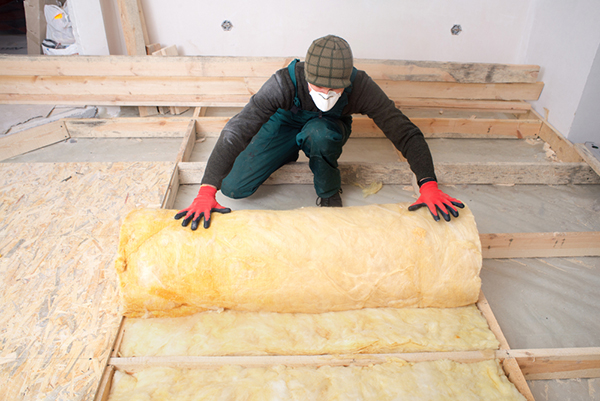How to Insulate an Attic Floor
Author: Sheryll Poe | October 12, 2023
When homeowners are repairing or replacing their roofs, they often have questions about other parts of the project, including how to insulate an attic floor. What determines whether it's better to insulate an attic ceiling, floor or both? What kinds of insulation are best for attic floors?
Residential roofing contractors need to be prepared to answer client questions and give qualified advice about this insulation option.

Where to Insulate?
A finished attic should be insulated much like the rest of the house, with insulation in the walls, ceiling and floor. If the attic is unfinished, putting proper insulation on the attic floor is one of the simplest ways to keep heating bills down and keep cooling needs in check. Even in an unfinished attic, homeowners can keep the rooms beneath warmer in the winter and cooler in the summer by adding insulation to the attic floor and having vents in the roof.
Offering to insulate your client's attic floor is a simple value add to any roofing project; it doesn't require a lot of additional time or labor and should be part of your roofing services or easily added through a subcontractor.
Which Insulation Is Best?
There are two types of insulation that work best on an attic floor: loose fill or batt (the common term for blanket insulation). Either insulation option can be added to uninsulated attics or layered over existing material.
Loose-fill is made of small particles of fiber, foam or other materials and can fit easily into existing finished or hard-to-reach spaces. The most common types of loose-fill insulation are cellulose (made from recycled paper products and newspapers), fiberglass and rockwool.
Batt or blanket insulation is also made from a variety of materials and comes in batts or rolls that are pre-measured to work with standard stud and joist spacing. It can also be cut to fit.
How to Insulate an Attic Floor?
After determining what kind of insulation the homeowner wants, a roofer can layer it on top of old insulation or place the new insulation between the attic floor joists. Here's how to insulate the attic floor:
- Pull up any existing flooring and measure the space so you can purchase the right materials.
- Plug up or seal any openings from the heated rooms below, such as recessed light fixtures, gaps around the chimney, exhaust fan ducts or housings, or holes drilled for wiring.
- Put down a vapor barrier between the joists to prevent any moist air from rising into the attic from the rooms below and to deter the growth of mold or mildew.
- Lay the precut bats in between the joists or pour the loose-fill insulation into space. Be sure to read the packaging labels on whichever insulation you choose to determine how much product you'll need to fill the space.
- Don't block any ducts or ventilation to the outside. Make sure there is a free flow of outside air along the underside of the roof.
- Replace plywood flooring, if necessary.
The Upside of Attic Floor Insulation
Updating and improving a homeowner's attic insulation is one area of business where a little bit of extra time and labor can make a significant impact on your client's comfort and overall happiness with the project.